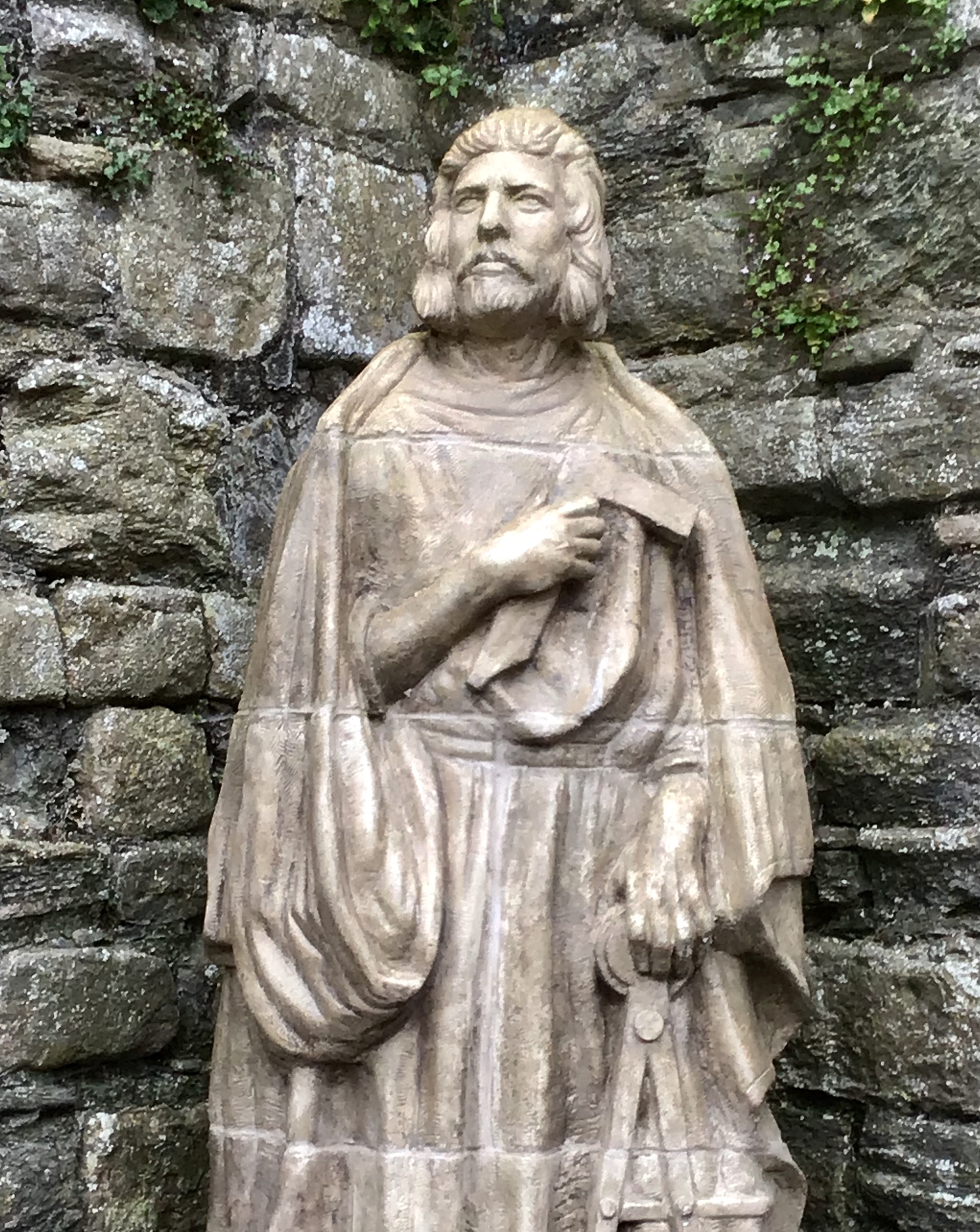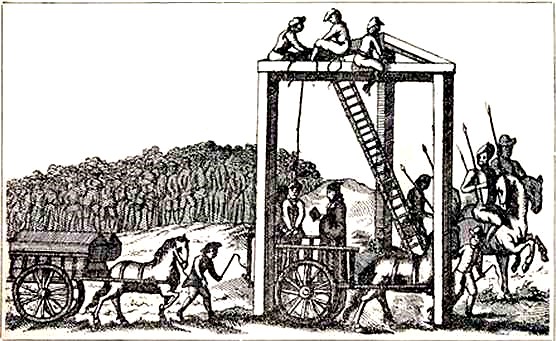|
Roger Mortimer De Chirk
Roger Mortimer, 1st Baron Mortimer of Chirk (c.1256 – 3 August 1326) was a 14th-century Marcher lord, notable for his opposition to Edward II of England during the Despenser War. Background and early service Roger was the third son of Roger Mortimer, a powerful Marcher lord in the Welsh border territories, and Maud de Braose, Baroness Mortimer who was also an important Marcher landowner in her own right. The family were from the second rank of ''parvenu'' nobility elevated by the king as a reward for fierce loyalty to the Plantagenet dynasty. But he was said to be a lecherous and violent man. He married Lucy de la Wafre, the daughter of Sir Robert la Wavre Lord of Hampton Wafer, Herefordshire, by whom he had one legitimate son, also named Roger. Presumably they were married by 8 June 1286, when Roger de Mortimer presented at the manor of Tedstone Wafer. In 1269, Gruffydd II, prince of Powys Fadog, died, and his lands were divided between his four sons. In 1277, the elde ... [...More Info...] [...Related Items...] OR: [Wikipedia] [Google] [Baidu] |
Baron Mortimer
Several members of the Mortimer family were summoned to Parliament during the reign of Edward I, thereby making them hereditary barons in the Peerage of England. The most important family with this surname were the lords of Wigmore, a marcher lordship on the borders of Herefordshire and Shropshire with Wales, living at Wigmore Castle. The second Baron Mortimer of Wigmore was created Earl of March. The others probably all belonged to juvenile branches of that family. *The Mortimers of Chirk had another marcher lordship, which was given to a younger brother of the first Baron Mortimer of Wigmore. *The Mortimers of Richard's Castle were descended from the Mortimers of Attleborough, who had separated from the Wigmore family long before. *Simon de Mortimer was summoned to parliament on 26 August 1296, but nothing more is known of that title. Feudal lords of Wigmore *Roger de Mortemer had Mortemer Castle in Normandy * Ralph or Ranulph de Mortimer had Wigmore at the time of Dom ... [...More Info...] [...Related Items...] OR: [Wikipedia] [Google] [Baidu] |
Madog II Ap Gruffydd, Lord Of Dinas Bran
Madog II was a Prince of Powys Fadog from 1269 to 1277. Lineage and inheritance He inherited the throne on the death of his father Prince Gruffydd Maelor II. Alliance with Gwynedd He was in alliance with Llywelyn ap Gruffudd, the prince of Gwynedd and all Wales as his effective overlord during the period following the Treaty of Montgomery. Death and burial In 1275, Llywelyn married the daughter of Simon de Montfort, 6th Earl of Leicester, the arch-enemy of the English king's father, Henry III. Simon's wife was Eleanor of England, the daughter of King John of the House of Plantagenet. When Llywelyn refused to offer a personal explanation, the king declared him a rebel and in 1277 invaded North Wales. Although the king's primary target was Gwynedd, Powys Fadog stood in the way. Madog chose to support Llywelyn, and was consequently killed in the fighting. It is thought that Madog may have been buried at Valle Crucis Abbey, of which he was a patron. Madog was succeeded by ... [...More Info...] [...Related Items...] OR: [Wikipedia] [Google] [Baidu] |
William Wallace
Sir William Wallace ( gd, Uilleam Uallas, ; Norman French: ; 23 August 1305) was a Scottish knight who became one of the main leaders during the First War of Scottish Independence. Along with Andrew Moray, Wallace defeated an English army at the Battle of Stirling Bridge in September 1297. He was appointed Guardian of Scotland and served until his defeat at the Battle of Falkirk in July 1298. In August 1305, Wallace was captured in Robroyston, near Glasgow, and handed over to King Edward I of England, who had him hanged, drawn and quartered for high treason and crimes against English civilians. Since his death, Wallace has obtained an iconic status far beyond his homeland. He is the protagonist of Blind Harry's 15th-century epic poem '' The Wallace'' and the subject of literary works by Jane Porter and Sir Walter Scott, and of the Academy Award-winning film '' Braveheart''. Background William Wallace was a member of the lesser nobility, but little is definitely known of ... [...More Info...] [...Related Items...] OR: [Wikipedia] [Google] [Baidu] |
Battle Of Falkirk (1298)
The Battle of Falkirk (''Blàr na h-Eaglaise Brice'' in Gaelic), on 22 July 1298, was one of the major battles in the First War of Scottish Independence. Led by King Edward I of England, the English army defeated the Scots, led by William Wallace. Shortly after the battle Wallace resigned as Guardian of Scotland. Background After the Battle of Stirling Bridge, from November 1297 until January 1298, Wallace led a Scottish army south. From Newcastle upon Tyne to Carlisle, the Scots raided the countryside, bringing back the spoils. King Edward learned of the defeat of his northern army at the Battle of Stirling Bridge. After concluding a truce with the French king, Philip the Fair in October 1297, he returned to England on 14 March 1298 to continue the ongoing organising of an army for his second invasion of Scotland which had been in preparation since late 1297. As a preliminary step he moved the centre of government to York, where it was to remain for the next six years. ... [...More Info...] [...Related Items...] OR: [Wikipedia] [Google] [Baidu] |
Beaumaris Castle
Beaumaris Castle ( ; cy, Castell Biwmares ), in Beaumaris, Anglesey, Wales, was built as part of Edward I's campaign to conquer north Wales after 1282. Plans were probably first made to construct the castle in 1284, but this was delayed due to lack of funds and work only began in 1295 following the Madog ap Llywelyn uprising. A substantial workforce was employed in the initial years under the direction of James of St George. Edward's invasion of Scotland soon diverted funding from the project, however, and work stopped, only recommencing after an invasion scare in 1306. When work finally ceased around 1330 a total of £15,000 had been spent, a huge sum for the period, but the castle remained incomplete. Beaumaris Castle was taken by Welsh forces in 1403 during the rebellion of Owain Glyndŵr, but recaptured by royal forces in 1405. In March 1592, the Welsh Roman Catholic priest and martyr William Davies was imprisoned in the castle, and was eventually hanged, drawn and ... [...More Info...] [...Related Items...] OR: [Wikipedia] [Google] [Baidu] |
James Of St George
Master James of Saint George (–1309; French: , Old French: Mestre Jaks, Latin: Magister Jacobus de Sancto Georgio) was a master of works/architect from Savoy, described by historian Marc Morris as "one of the greatest architects of the European Middle Ages". He was largely responsible for designing King Edward I's castles in North Wales, including Conwy, Harlech and Caernarfon (all begun in 1283) and Beaumaris on Anglesey (begun 1295). Origin and early life There is little firm documentary evidence of James’ early life and origin. However, we have very strong circumstantial evidence that his place of birth was Saint-Prex in or around the year 1230. We know for certain that his father was also an architect mason named John. This strong evidence related to his father, including year of death and architectural style lead to the conclusion that John was Jean Cotereel the builder of Saint-Prex and Lausanne Cathedral. Of particular interest are the similarities of the rose wind ... [...More Info...] [...Related Items...] OR: [Wikipedia] [Google] [Baidu] |
Chirk Castle
Chirk Castle ( cy, Castell y Waun) is a Grade I listed castle located in Chirk, Wrexham County Borough, Wales. History The castle was built in 1295 by Roger Mortimer de Chirk, uncle of Roger Mortimer, 1st Earl of March as part of King Edward I's chain of fortresses across the north of Wales. It guards the entrance to the Ceiriog Valley. It was the administrative centre for the Marcher Lordship of Chirkland. The castle was bought by Sir Thomas Myddelton in 1593 for £5,000 (approx. £11 million ). His son, Thomas Myddelton of Chirk Castle was a Parliamentarian during the English Civil War, but became a Royalist during the 'Cheshire rising' of 1659 led by George Booth, 1st Baron Delamer. Mullioned and transomed windows were inserted in the 16th and 17th centuries; the castle was partly demolished in the English Civil War and then rebuilt. Following the Restoration, his son became Sir Thomas Myddelton, 1st Baronet of Chirke. The castle passed down in the Myddelton family to ... [...More Info...] [...Related Items...] OR: [Wikipedia] [Google] [Baidu] |
Llywelyn Ap Gruffudd
Llywelyn ap Gruffudd (c. 1223 – 11 December 1282), sometimes written as Llywelyn ap Gruffydd, also known as Llywelyn the Last ( cy, Llywelyn Ein Llyw Olaf, lit=Llywelyn, Our Last Leader), was the native Prince of Wales ( la, Princeps Walliae, links=no; cy, Tywysog Cymru, links=no) from 1258 until his death at Cilmeri in 1282. Llywelyn was the son of Gruffydd ap Llywelyn Fawr and grandson of Llywelyn the Great, and he was one of the last native and independent princes of Wales before its conquest by Edward I of England and English rule in Wales that followed, until Owain Glyndŵr held the title during the Welsh Revolt of 1400–1415. Genealogy and early life Llywelyn was the second of the four sons of Gruffydd, the eldest son of Llywelyn the Great, and Senana ferch Caradog, the daughter of Caradoc ap Thomas ap Rhodri, Lord of Anglesey. The eldest was Owain Goch ap Gruffydd and Llywelyn had two younger brothers, Dafydd ap Gruffydd and Rhodri ap Gruffydd. Llywelyn is ... [...More Info...] [...Related Items...] OR: [Wikipedia] [Google] [Baidu] |
Edmund Mortimer, 2nd Baron Mortimer Of Wigmore
Edmund Mortimer, 2nd Baron Mortimer of Wigmore (c. 1251 – 17 July 1304) was the second son and eventual heir of Roger Mortimer, 1st Baron Mortimer of Wigmore. His mother was Maud de Braose. Life As a younger son, Edmund had been intended for clerical or monastic life, and had been sent to study at Oxford University. He was made Treasurer of York in 1265. By 1268 he is recorded as studying theology in the house of the Archbishop of York. King Henry III of England showed favour by supplementing his diet with the luxury of venison. The sudden death of his elder brother, Ralph, in 1274, made him heir to the family estates; yet he continued to study at Oxford. But his father's death eventually forced his departure. Edmund returned to the March in 1282 as the new Baron Mortimer of Wigmore and immediately became involved in Welsh Marches politics. Together with his brother Roger Mortimer, 1st Baron Mortimer of Chirk, John Giffard, and Roger Lestrange, he devised a plan to trap his k ... [...More Info...] [...Related Items...] OR: [Wikipedia] [Google] [Baidu] |
Treaty Of Aberconwy
The Treaty of Aberconwy was signed on the 10th of November 1277, the treaty was by King Edward I of England and Llewelyn the Last, Prince of Wales, following Edward’s invasion of Llewelyn’s territories earlier that year. The treaty granted peace between the two but also essentially guaranteed that Welsh self-rule would end upon Llewelyn's death and represented the completion of the first stage of the Conquest of Wales by Edward I. Background Llewelyn, wanting to cement his links to royalty more forcefully, sought to marry Eleanor de Montfort, daughter of Simon de Montfort and King Edward's cousin. They were married by proxy in 1275, but when Eleanor sailed from France to meet Llewelyn, Edward hired pirates to seize her ship; she was imprisoned at Windsor Castle. Edward, who was newly acceded to the throne of England, viewed Llewelyn as a threat, and particularly disliked the idea of his marrying the daughter of de Montfort, who had been the biggest threat to his royal pred ... [...More Info...] [...Related Items...] OR: [Wikipedia] [Google] [Baidu] |
Perfeddwlad
Perfeddwlad or Y Berfeddwlad was an historic name for the territories in Wales lying between the River Conwy and the River Dee. comprising the cantrefi of Rhos, Rhufoniog, Dyffryn Clwyd and Tegeingl. Perfeddwlad thus was also known as the Four Cantrefs. Early history For much of its history the area had been known as ''Tegeingl'', after the Celtic tribe ''Deceangli'' which inhabited North East Wales since the Iron Age. This was also the name of the most easterly cantref of the region. As the Kingdom of Gwynedd emerged as the dominant power in North Wales, the area also became known as ''Gwynedd Is Conwy'' (Gwynedd "below" the Conwy River). The name Y Berfeddwlad appears in the High Middle Ages, as the rivalries between Gwynedd, Powys, and the Anglo-Saxon England (and later Normans) intensified. The name is a contraction ofPerfedd andgwlad meaning ''heart-land'' or ''middle-country'' as the area became a centre of conflict. Later history Shortly after the death of Owain, the ... [...More Info...] [...Related Items...] OR: [Wikipedia] [Google] [Baidu] |
Roger Mortimer, 1st Earl Of March
Roger Mortimer, 3rd Baron Mortimer of Wigmore, 1st Earl of March (25 April 1287 – 29 November 1330), was an English nobleman and powerful Marcher Lord who gained many estates in the Welsh Marches and Ireland following his advantageous marriage to the wealthy heiress Joan de Geneville, 2nd Baroness Geneville. Her mother was of the Royal House of Lusignan. In November 1316, he was appointed Lord Lieutenant of Ireland. He was imprisoned in the Tower of London in 1322 for having led the Marcher lords in a revolt against King Edward II in what became known as the Despenser War. He later escaped to France, where he was joined by Edward's queen consort Isabella, where they may have begun an affair. After he and Isabella led a successful invasion and rebellion, Edward was deposed; Mortimer allegedly arranged his murder at Berkeley Castle. For three years, Mortimer was ''de facto'' ruler of England before being himself overthrown by Edward's eldest son, Edward III. Accused of ass ... [...More Info...] [...Related Items...] OR: [Wikipedia] [Google] [Baidu] |




